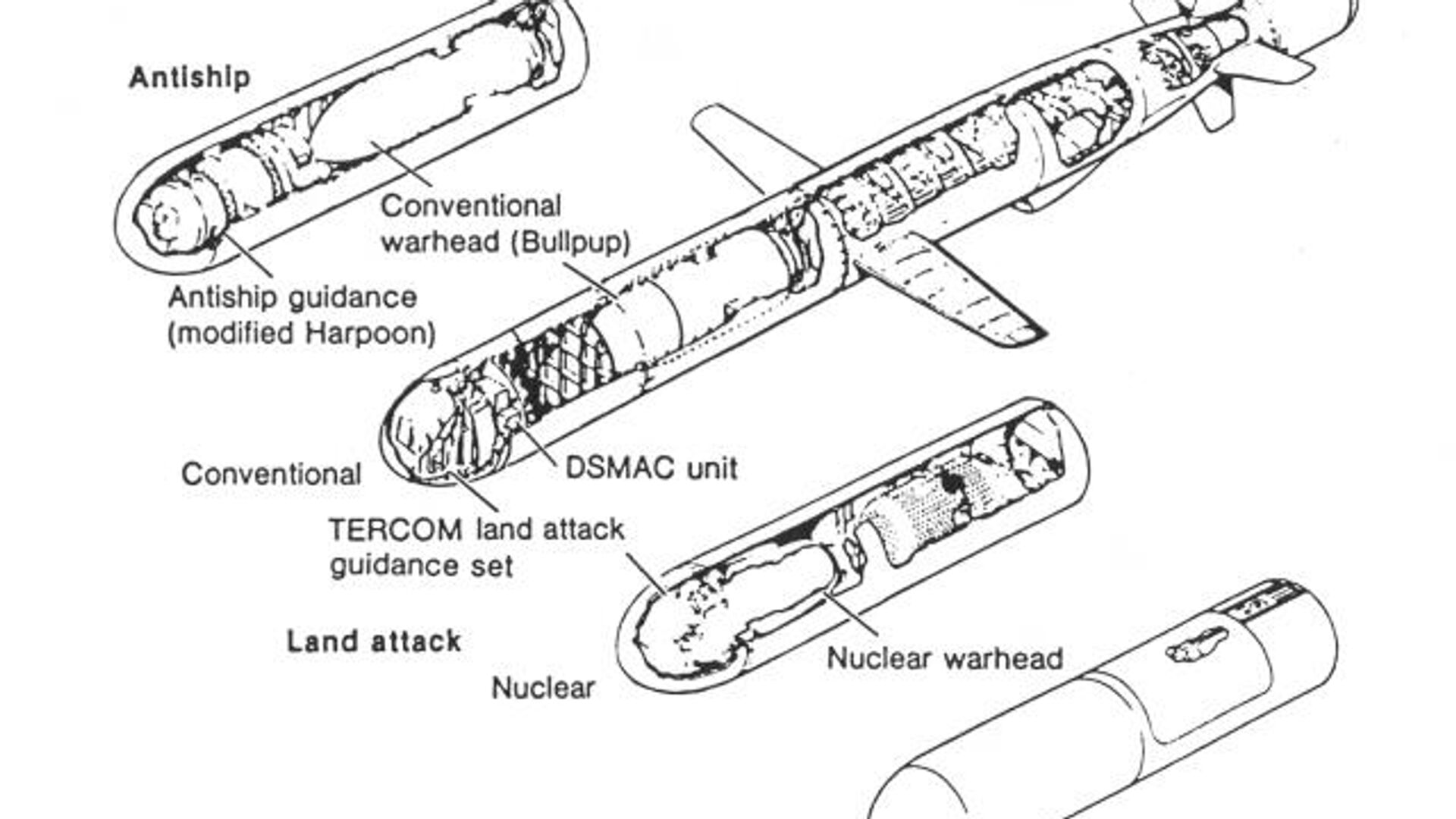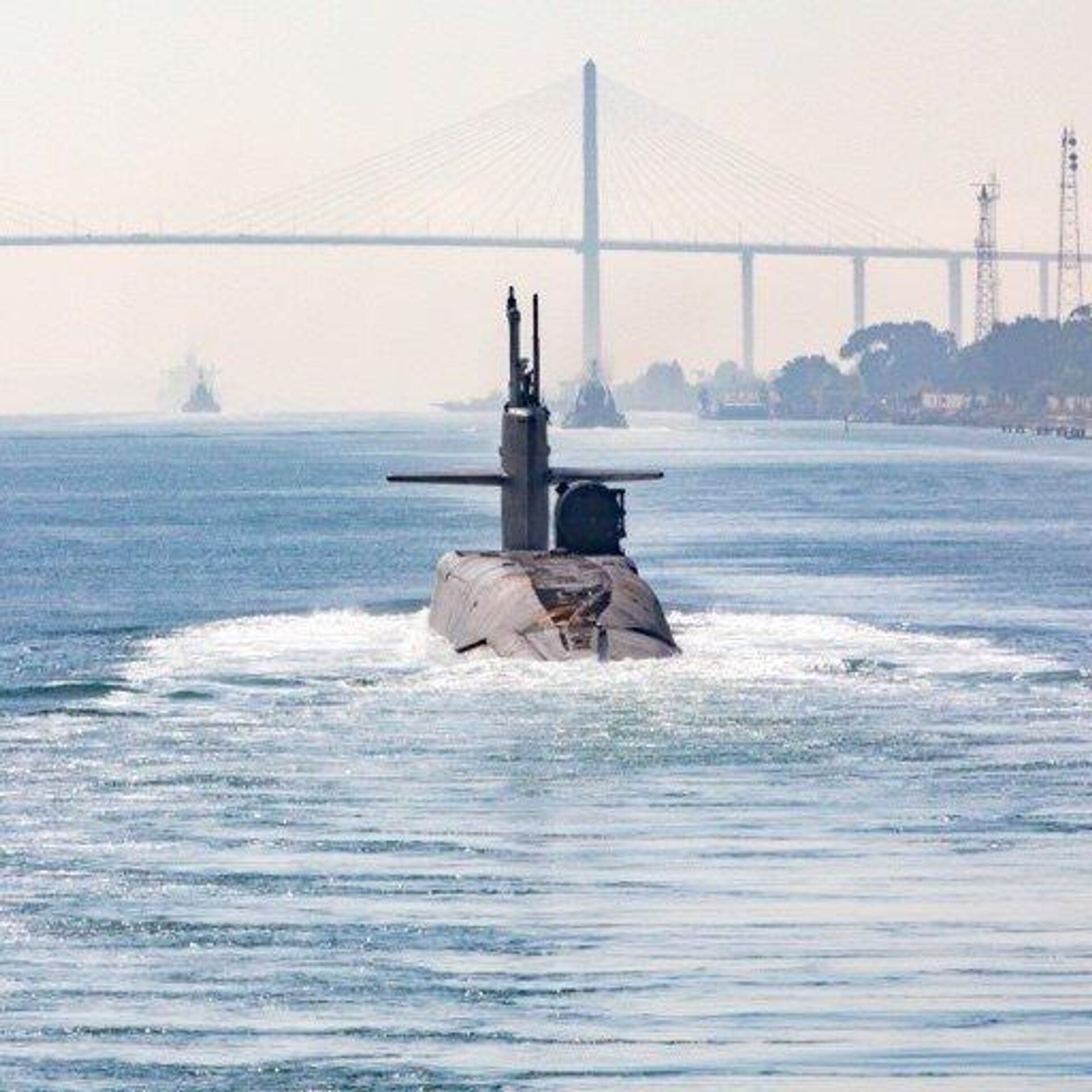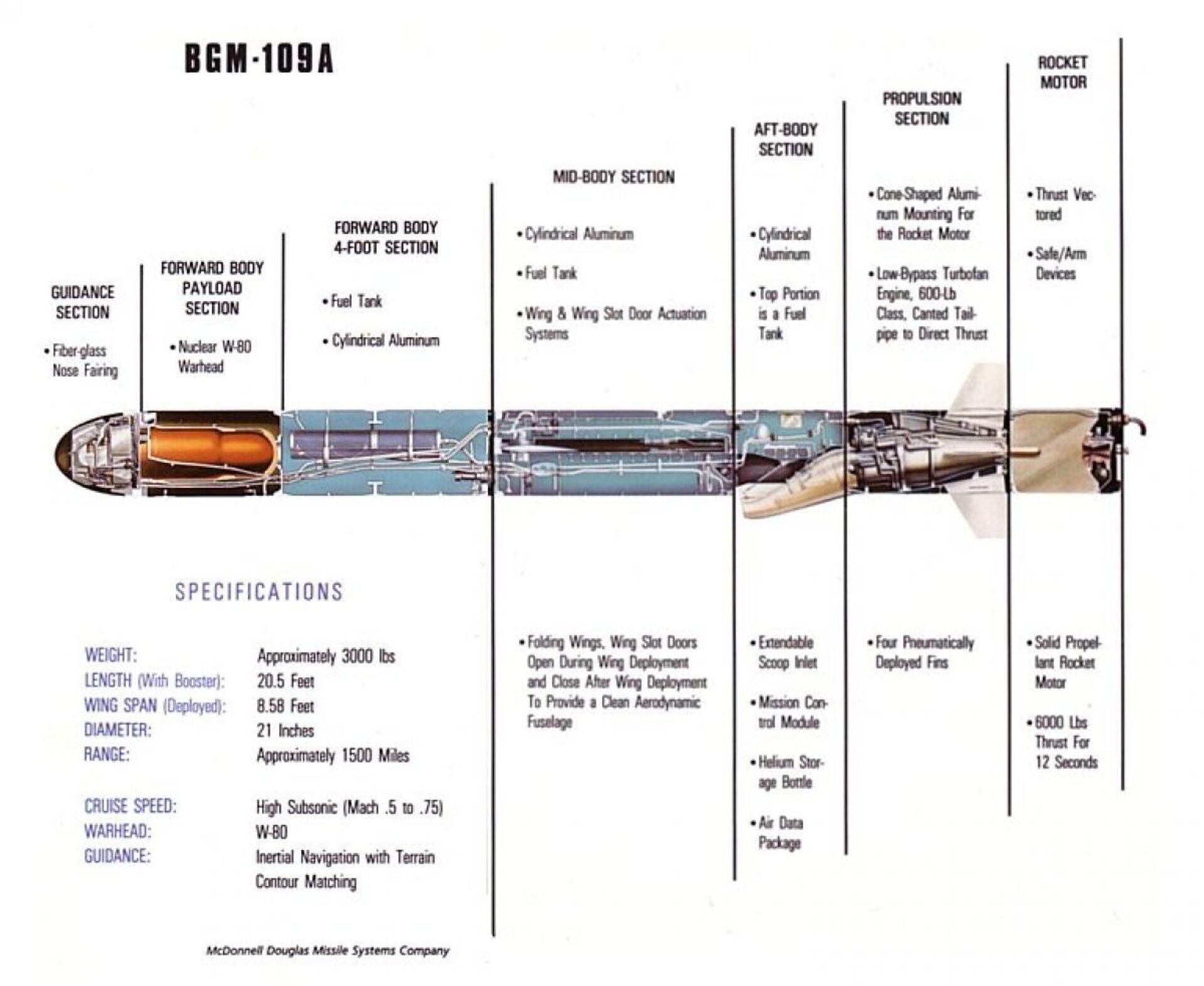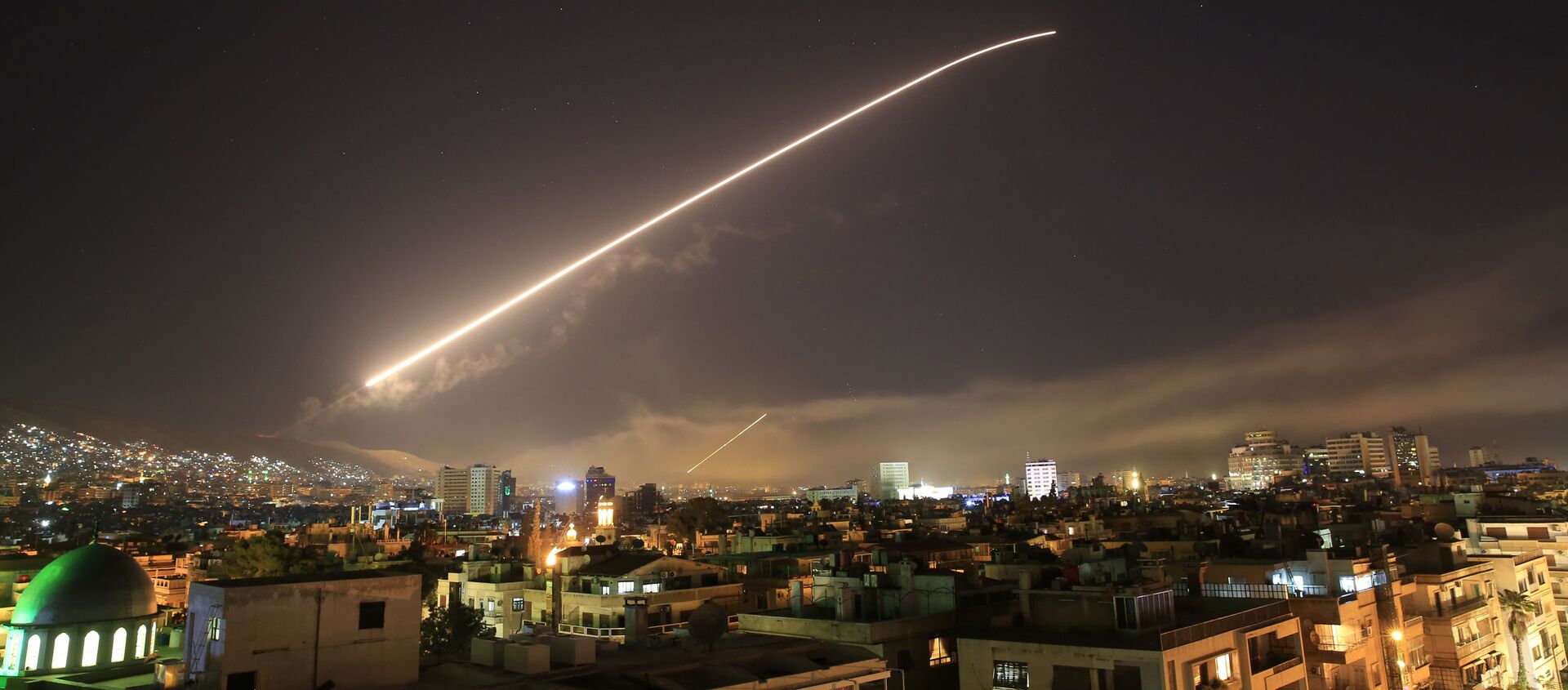https://sputnikglobe.com/20231107/what-are-tomahawk-cruise-missiles-us-has-sent-to-mideast-and-how-can-they-be-defeated-1114788246.html
What are Tomahawk Cruise Missiles US Has Sent to Mideast and How Can They Be Defeated?
What are Tomahawk Cruise Missiles US Has Sent to Mideast and How Can They Be Defeated?
Sputnik International
The US confirmed on Monday that an Ohio-class missile submarine had been deployed in the Middle East. US media called the deployment a “message of deterrence” to Israel’s “regional adversaries” amid the Gaza crisis. The sub is known to be armed with Tomahawk cruise missiles. Here’s what we know about the weapon’s strengths and weaknesses.
2023-11-07T12:44+0000
2023-11-07T12:44+0000
2023-11-07T17:34+0000
military
military & intelligence
pentagon
us central command (centcom)
tomahawk
cruise missile
https://cdn1.img.sputnikglobe.com/img/07e7/0b/07/1114789348_0:45:640:405_1920x0_80_0_0_825f6979b0eeeaeb5ca8e21fdae83952.jpg
United States Central Command (USCENTCOM), the combatant command responsible for US military operations in the Middle East, published a photo late Sunday of an Ohio-class nuclear-powered ballistic missile submarine deployed to the Middle East, showing it sailing through the Suez Canal between the Mediterranean and Red seas.The Pentagon did not offer details on which of the Navy’s 18 Ohio-class boats the deployed sub was, but did confirm to media that the vessel was one of its guided-missile sub (SSGN) variants, not a ballistic missile sub (SSBN). The dry deck seen jutting out in the CENTCOM photo confirms that the deployed vessel is indeed an SSGN, as it is a feature available only in the guided-missile sub variant of the boat for use by special operations forces. Four of the Navy’s 18 Ohio-class subs have been converted into SSGNs.Unlike SSBNs, which are armed with 20 Trident II MIRV-equipped submarine-launched ballistic missiles – enough firepower to destroy a continent, SSGN conversions are armed with Tomahawk cruise missiles – the backbone of the US military’s cruise missile capability for decades. Ohio-class SSGNs can carry up to 154 Tomahawks, launched from 22 launch tubes.What are the Tomahawks' Capabilities?The Tomahawk is a medium to long-range (460-2,500 km), all-weather, subsonic cruise missile used by the US and British navies for land attack strikes using warships and submarines. Developed at the Johns Hopkins Applied Physics Laboratory in the 1970s and first introduced into service with the US Navy in 1983, the Tomahawk has seen multiple upgrades and more than half a dozen modifications, including an anti-ship version, an air-to-surface variant (never fielded), and a ground-launched variant withdrawn from service in the 1990s to comply with the now defunct Intermediate-Range Nuclear Forces Treaty (but which Russia believes the US could easily reactivate).Tomahawks come in a variety of configurations as far as firepower is concerned, including a conventional variant with a 1,000 pound (450 kg) high explosive warhead or cluster munition. In their nuclear variant, the missiles currently carry the W80 – a low to intermediate-yield two-stage nuclear warhead with explosive firepower of between 5 and 150 kilotons of TNT (for reference, the atomic bomb the United States dropped on Hiroshima in 1945 had an explosive yield of 13 kilotons).The missiles feature GPS, active radar, inertial navigation, and terrain contour matching-based guidance, and in its newest variants, jamming-resistant GPS receivers. Tomahawks have a per-unit price tag of about $2 million for the latest Block V variant introduced in 2021.Where Has the US Used Tomahawks?The Tomahawk has been central to nearly all US military operations and wars of aggression since the end of the Cold War, and used during the 1991 Gulf War, through the 1990s US bombings of Iraq and Yugoslavia, in Sudan, Afghanistan, Iraq during the 2003 invasion, Yemen, the operation to overthrow Libyan leader Muammar Gadhafi in 2011, and in Syria in 2017 and 2018 (in response to false flag chemical attack provocations by CIA-backed ‘moderate rebel’ jihadists). During the 2017 Tomahawk attack on Syria, American news host Brian Williams quoted a lyric from a song by anti-war singer and songwriter Leonard Cohen, saying he was "guided by the beauty of our weapons" in describing the missiles' launch.Tomahawk manufacturer Raytheon says the United States has fired Tomahawks in combat over 2,300 times over the past 32 years, all of them using the conventional variant of the cruise missile. Iraq has borne the brunt of these attacks, accounting for at least 1,575 of the total missiles fired.Along with Ohio-class SSGNs, Tomahawks can be fired from an array of US surface ships, including Arleigh Burke-class guided missile destroyers. The missiles are launched using the Mark 41, a ground or shipborne vertical launching system that can be equipped aboard a wide variety of warships. On Ohio-class SSGNs, they’re launched from special, converted Trident missile tubes, and also using a vertical launch system configuration. The deployment of Mark 41 launch systems near Russia at US Aegis Ashore missile defense systems in Romania and Poland have sparked concerns from Moscow that Washington could secretly station nuclear-tipped Tomahawks just a few minutes' flight time from Russia's borders.How Can Tomahawks Be Defeated?While they are a significant threat to all of Washington’s potential adversaries due to their low radar cross section and ability to fly toward targets at low altitudes over land and sea, and because of their wide prevalence aboard warships which the United States Navy has dotting the globe, Tomahawks are far from invulnerable.US officials have confirmed that multiple Tomahawks were shot down by Iraqi air defenses in the 1990s, and they were also downed by Yugoslav air defenses along with more than a dozen US and NATO aircraft. During the 2018 US, British, and French strikes on Syria, which along with Tomahawks involved the use of JASSM, Storm Shadow, SCALP and MdCN missiles, Syrian air defenses successfully shot down 71 of 103 attacking missiles using Soviet-era S-125, S-200, Buk and Kvadrat air defense systems, plus newer, Russian made Pantsir-S1 self-propelled missile and anti-aircraft artillery systems.In the context of the Ohio-class SSGN’s Middle East deployment this week, it can be said that while Tomahawks may pose a threat to non-state actors, they would face a tougher time reaching targets if ever deployed against the US and Israel’s major regional adversary – Iran.Currently Iran has one of the most powerful layered air defense systems in the Middle East. In addition to Soviet and Russian-made Kub, Tor and S-300 missile systems, Iran has created an array of advanced homegrown missile defense platforms, including the Kamin-2, the Khordad-3 (used to shoot down a $220 million US stealth drone in 2019), the Bavar-373 (an Iranian-made S-300 analogue), the Fajr-8 and the Sayyad series of air defense platforms. Even Iran’s man-portable air-defense systems like the Misagh-1 and 2 can theoretically be used to target Tomahawks, since the missiles fly at subsonic speeds close to the ground.
https://sputnikglobe.com/20231106/what-message-does-us-tomahawk-carrying-submarine-send-amid-gaza-war-1114768378.html
https://sputnikglobe.com/20180414/syria-air-defense-forces-analysis-1063558487.html
Sputnik International
feedback@sputniknews.com
+74956456601
MIA „Rosiya Segodnya“
2023
News
en_EN
Sputnik International
feedback@sputniknews.com
+74956456601
MIA „Rosiya Segodnya“
Sputnik International
feedback@sputniknews.com
+74956456601
MIA „Rosiya Segodnya“
tomahawk, cruise missile, capabilities, limitations, united states, ohio-class, missile, middle east, iran, hezbollah, hamas, air defense, missile defense, range, characteristics, payload, firepower
tomahawk, cruise missile, capabilities, limitations, united states, ohio-class, missile, middle east, iran, hezbollah, hamas, air defense, missile defense, range, characteristics, payload, firepower
What are Tomahawk Cruise Missiles US Has Sent to Mideast and How Can They Be Defeated?
12:44 GMT 07.11.2023 (Updated: 17:34 GMT 07.11.2023) The US confirmed on Sunday that an Ohio-class missile submarine had been deployed in the Middle East. US media called the deployment a “message of deterrence” to Israel’s “regional adversaries” amid the Gaza crisis. The sub is known to be armed with Tomahawk cruise missiles. Here’s what we know about the weapon’s strengths and weaknesses.
United States Central Command (USCENTCOM), the combatant command responsible for US military operations in the Middle East, published a photo late Sunday of an Ohio-class nuclear-powered ballistic missile submarine deployed to the Middle East, showing it sailing through the Suez Canal between the Mediterranean and Red seas.
The Pentagon did not offer details on which of the Navy’s 18 Ohio-class boats the deployed sub was, but did confirm to media that the vessel was one of its guided-missile sub (SSGN) variants, not a ballistic missile sub (SSBN). The dry deck seen jutting out in the CENTCOM photo confirms that the deployed vessel is indeed an SSGN, as it is a feature available only in the guided-missile sub variant of the boat for use by special operations forces. Four of the Navy’s 18 Ohio-class subs have been converted into SSGNs.
Unlike SSBNs, which are armed with 20 Trident II MIRV-equipped submarine-launched ballistic missiles – enough firepower to destroy a continent, SSGN conversions are armed with Tomahawk cruise missiles – the backbone of the US military’s cruise missile capability for decades. Ohio-class SSGNs can carry up to 154 Tomahawks, launched from 22 launch tubes.
What are the Tomahawks' Capabilities?
The Tomahawk is a medium to long-range (460-2,500 km), all-weather, subsonic cruise missile used by the US and British navies for land attack strikes using warships and submarines. Developed at the Johns Hopkins Applied Physics Laboratory in the 1970s and first introduced into service with the US Navy in 1983, the Tomahawk has seen multiple upgrades and more than half a dozen modifications, including an anti-ship version, an air-to-surface variant (never fielded), and a ground-launched variant withdrawn from service in the 1990s to comply with the now defunct Intermediate-Range Nuclear Forces Treaty (but which Russia believes the US could easily reactivate).
Tomahawks come in a variety of configurations as far as firepower is concerned, including a conventional variant with a 1,000 pound (450 kg) high explosive warhead or cluster munition. In their nuclear variant, the missiles currently carry the W80 – a low to intermediate-yield two-stage nuclear warhead with explosive firepower of between 5 and 150 kilotons of TNT (for reference, the atomic bomb the United States dropped on Hiroshima in 1945 had an explosive yield of 13 kilotons).
The missiles feature GPS, active radar, inertial navigation, and terrain contour matching-based guidance, and in its newest variants, jamming-resistant GPS receivers. Tomahawks have a per-unit price tag of about $2 million for the latest Block V variant introduced in 2021.
Where Has the US Used Tomahawks?
The Tomahawk has been central to nearly all US military operations and wars of aggression since the end of the Cold War, and used during the 1991 Gulf War, through the 1990s US bombings of Iraq and Yugoslavia, in Sudan, Afghanistan, Iraq during the 2003 invasion, Yemen, the operation to overthrow Libyan leader Muammar Gadhafi in 2011, and in Syria in 2017 and 2018 (in response to false flag chemical attack provocations by CIA-backed ‘moderate rebel’ jihadists). During the 2017 Tomahawk attack on Syria, American news host Brian Williams quoted a lyric from a song by anti-war singer and songwriter Leonard Cohen, saying he was "guided by the beauty of our weapons" in describing the missiles' launch.
Tomahawk manufacturer Raytheon says the United States has fired Tomahawks in combat over 2,300 times over the past 32 years, all of them using the conventional variant of the cruise missile. Iraq has borne the brunt of these attacks, accounting for at least 1,575 of the total missiles fired.
Along with Ohio-class SSGNs, Tomahawks can be fired from an array of US surface ships, including Arleigh Burke-class guided missile destroyers. The missiles are launched using the Mark 41, a ground or shipborne vertical launching system that can be equipped aboard a wide variety of warships. On Ohio-class SSGNs, they’re launched from special, converted Trident missile tubes, and also using a vertical launch system configuration. The deployment of Mark 41 launch systems near Russia at US Aegis Ashore missile defense systems in Romania and Poland have sparked concerns from Moscow that Washington could secretly station nuclear-tipped Tomahawks just a few minutes' flight time from Russia's borders.
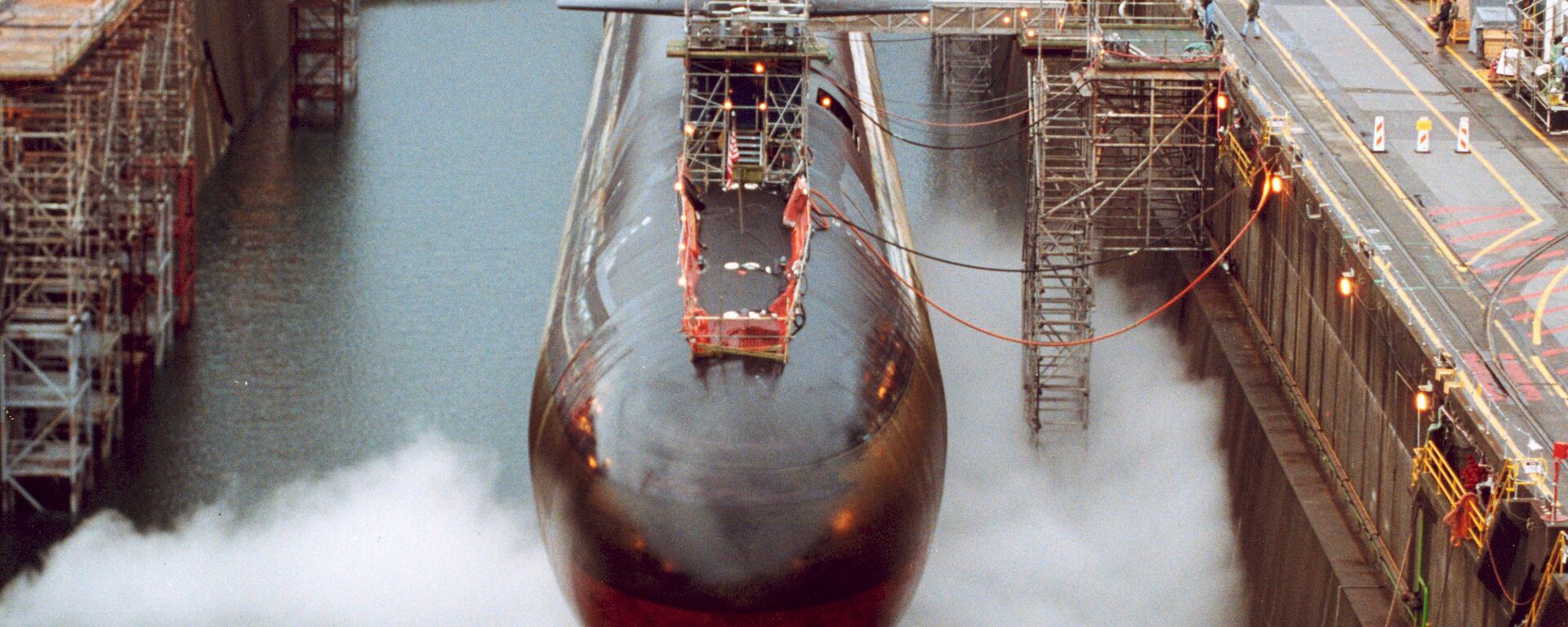
6 November 2023, 16:12 GMT
How Can Tomahawks Be Defeated?
While they are a significant threat to all of Washington’s potential adversaries due to their low radar cross section and ability to fly toward targets at low altitudes over land and sea, and because of their wide prevalence aboard warships which the United States Navy has dotting the globe, Tomahawks are far from invulnerable.
US officials have confirmed that multiple Tomahawks were
shot down by Iraqi air defenses in the 1990s, and they were also downed by Yugoslav air defenses along with
more than a dozen US and NATO aircraft. During the 2018 US, British, and French strikes on Syria, which along with Tomahawks involved the use of JASSM, Storm Shadow, SCALP and MdCN missiles, Syrian air defenses successfully shot down 71 of 103 attacking missiles using Soviet-era S-125, S-200, Buk and Kvadrat air defense systems, plus newer, Russian made Pantsir-S1 self-propelled missile and anti-aircraft artillery systems.
In the context of the Ohio-class SSGN’s Middle East deployment this week, it can be said that while Tomahawks may pose a threat to non-state actors, they would face a tougher time reaching targets if ever deployed against the US and Israel’s major regional adversary – Iran.
Currently Iran has one of the most powerful layered air defense systems in the Middle East. In addition to Soviet and Russian-made Kub, Tor and S-300 missile systems, Iran has created an array of advanced homegrown missile defense platforms, including the Kamin-2, the Khordad-3 (used to shoot down a $220 million US stealth drone in 2019), the Bavar-373 (an Iranian-made S-300 analogue), the Fajr-8 and the Sayyad series of air defense platforms. Even Iran’s man-portable air-defense systems like the Misagh-1 and 2 can theoretically be used to target Tomahawks, since the missiles fly at subsonic speeds close to the ground.
